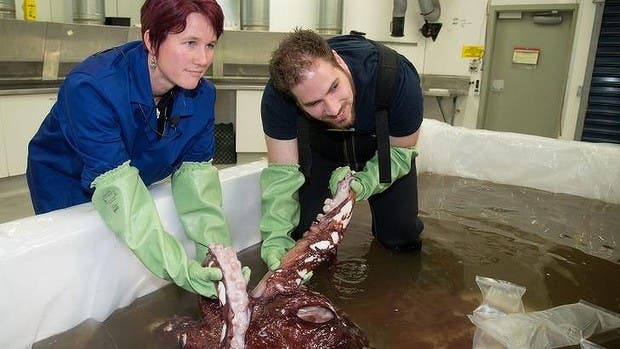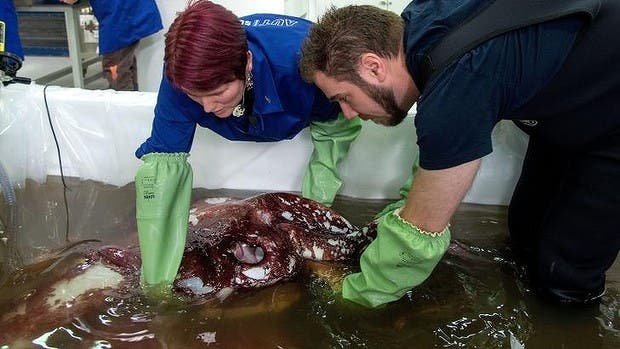A female colossal squid weighing 350 kilograms (771 pounds) was discovered in the Atlantic. As it turns out, the female also had eggs – becoming only the second specimen found with eggs.

The colossal squid is believed to be the largest squid species in terms of mass. It is the only known member of its genus and can reach sizes of 12-14 meters, though it’s believed that they usually reach “only” 4-5 meters; one of its characteristics is a massive growth speed. This would make the 350 kg specimen relatively small.
The squid had been frozen in Wellington, New Zealand in good shape:
“This one had two perfect eyes,” said scientist Kat Bolstad from Auckland University of Technology who led the examination.
“They have very large and very delicate eyes because they live in the deep sea. It’s very rare to see an eye in good condition at all.”
Although it’s hard to actually define this, researchers believe it is the most perfect specimen ever found. The only other time they had the chance to examine an intact colossal squid was in 2008, also in Wellington.

“The fact that we have a specimen in good shape, but that we can get so much information from and still have in good shape, is a win-win,” Bolstad said
To me, this raises a clear ethical issue. The squid was found by a fishing vessel in Antarctica; the captain recognized what he was looking at and carefully netted it and brought it onboard. Now, of course it’s important to study and understand these magnificent creatures, but the problem is that we don’t know how many of them there are in the wild – we have no idea. Biologists estimate that their numbers weren’t so large in the first place, and recently, many of them have been eaten by sperm whales, so the populations are likely dwindling. In these conditions, harvesting a female with eggs doesn’t seem like quite an ethical thing to do – at least in my book.
Via AFFP.






